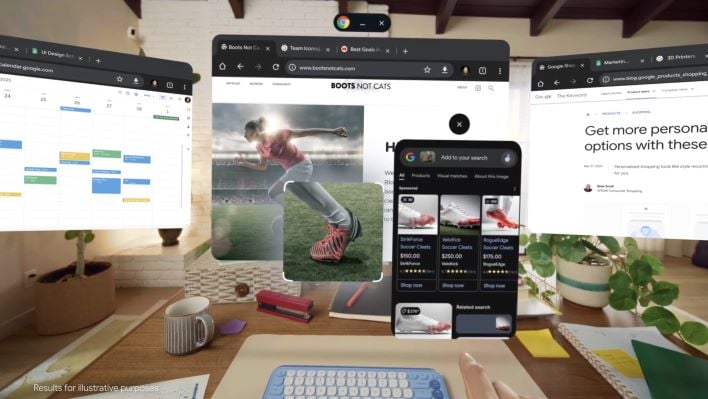Google And Samsung Team Up On Android XR Headset To Take On Apple And Meta
There's no doubt that Samsung and Google have invested a lot of money into VR/AR/MR development over the years (be it independently or on other joint projects), but after seeing Apple's visionary Vision Pro leap into the air with great fanfare and fall flat on its face just as quickly, the twosome believe that now is the time to take on Cupertino with their take on what a mixed reality experience can be. While Apple markets its wearable device more as a virtual workspace extension, it seems like Samsung-Google are relying on generative AI to be the core of the product.

Yes, this Samsung-Google headset boasts capabilities similar to the Vision Pro in that it can seamlessly switch between virtual environments and workspaces, allowing users to spread windows and apps across their field of view, but Gemini AI may be the clincher that the MR/AR arena needs. It could serve as the bridge between the user's smartphone, Chromebook, smarthome, as well as apps within Google Play, contextually adapting to the users needs.
To that end, this product (codenamed Project Moohan) will run Android for XR, which is a spatial software platform jointly developed by Google, Samsung, and Qualcomm. The operating system will initially be exclusive for this new headset, but will ultimately be made available to other brands and their own headsets or smart glasses (a la Ray-Ban Metas).
Android for XR is now released as a Developer Preview. Shahram Izadi, VP/GM of Android for XR, said that because the OS supports "tools like ARCore, Android Studio, Jetpack Compose, Unity, and OpenXR from the beginning, developers can easily start building apps and games for upcoming Android XR devices."
All of this is promising, but Google is no stranger to creating under-performing hardware. As for pricing, Apple's Vision Pro goes for $3,500 nowadays, so we hope that the Project Moohan headset undercuts that by a good margin. In contrast, Meta's top-of-the-line Quest 3 runs $500.
Photo credits: Google

